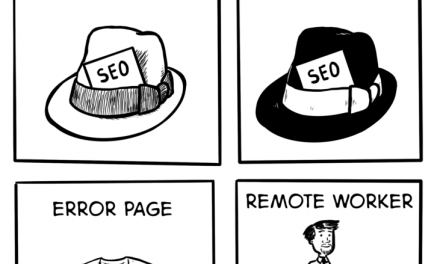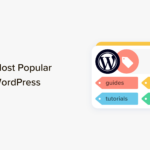Welcome to Press This, the WordPress community podcast from WMR. Here host David Vogelpohl sits down with guests from around the community to talk about the biggest issues facing WordPress developers. The following is a transcription of the original recording.
David Vogelpohl: Hello everyone and welcome to Press This the WordPress community podcasts on WMR. This is your host, David Vogelpohl, I support the WordPress community through my role at WP Engine, and I love to bring the best of the community to you hear every week on press this as a reminder, you can find me on Twitter @wpdavidv, or you can subscribe to press this on iTunes, iHeartRadio, Spotify, or download the latest episodes at wmr.fm. In this episode we’re going to be talking about strategies for building drop shipping based WooCommerce stores and joining us for that conversation. I’d like to welcome from Zendrop Mr. Jared Goetz. Jared, welcome.
Jared Goetz: Thank you so much for having me on here excited for our conversation today.
DV: I am excited as well for those listening with your it’s going to chat about our his thoughts on the strategies when building successful drop shipping based businesses. You’re gonna have a lot of experience in this area. He’s built and grown his own drop shipping based business and has founded and runs a business called Zen drop that specifically focuses on enabling dropship based e commerce businesses. I’m sure you have a lot to share here. Jared, we’re really excited to hear your view on these topics. But I’m gonna ask you the first question I asked all our guests here it briefly tell me about the first time you used WordPress.
JG: First time I personally use WordPress was building my personal website I didn’t manage and do it myself. But my team built it. And then you know, we realized that lots of people use WordPress and WooCommerce when we started getting flooded with emails to do an integration present drop. So now we’re working a lot more with WordPress. On these WooCommerce eCommerce businesses with Zendrop.
DV: Okay, so you were you were building it for personal site? Do you remember what year this was by chance? Like roughly?
JG: Probably like 2017
DV: Okay, so 2017 That’s an exciting year in the WordPress timeline. I know that probably didn’t have an impact on how you were thinking about building your site at the time but this was right before the WordPress block editor was introduced. But it kind of like in the thick of WordPress is kind of swelling popularity so it makes sense that you might have dipped your toe in at the time. But you kind of alluded to the fact that you had kind of founded this company Zen drop and I referenced it earlier. Can you tell us a little bit about what Zen drop does?
JG: Yeah, Zendrop basically allows you if you have an e commerce Store and you want to sell products, but you don’t want to deal with suppliers, you don’t want to source inventory warehouse products ship things out. You could simply go on Zan drop, we have over 500,000 skews of different products that you can sell. We make it so that you can add those products to your store with one click. All the data from the product goes on your store. You can go and sell those products however you want. You know you could run Facebook ads or Google ads or tick tock or influencers and you can sell products and every time you make a sale, we get the order data into Zen drought and we get the product shipped out to your customer either through our warehouses or through our suppliers that sign up. It’s a double sided marketplace so we have sellers and yeah, all the tracking information automatically goes back into your store and out to your customer and the whole fulfillment process is automated.
DV: That’s really cool. You know when I first was preparing for this interview, I thought it was only the technology side but you’ve got the the seller side as well. Or is that what you call the supplier side is what you call them. So that you said was a double sided marketplace?
JG: Yeah, exactly. So one set of users are, you know, users like listeners of this podcast who have an e commerce Store. And the other set of users are individuals or businesses that have actual product that they would like to list on zendrive for other people to sell
DV: interesting and then on the site owner side, the thing that you deal most often with like the business or site owner or the person building the store for them or both, or how does that I’m just curious about that side of your businesses. Is it kind of a blend or is it mainly focused on the store owner persona
JG: you know, we it’s a blend, the majority of our users are, you know, store owners. You know they’ve run most of the their business themselves or smaller businesses are just getting started. But then we also have a mix of you know, multi 100 million dollar brands that you know, have a whole operation but they want more products to test to run ads to and try to get lower cost per acquisitions. You know, without sacrificing quality shipping times, things like that. You know, so we work with with really people of all sizes, but I’d say the majority are smaller business owners.
DV: Okay so, that makes sense. So it’s not just the solopreneur but it’s a blend of businesses using Drop Shipping almost in a sense for different strategies depending on where they are, what they’re trying to achieve. So I’m curious like, if you could unpack that a little bit, like just from the high level like what you’ve already explained in first what drop shipping is any people know what it is, but how are what are the strategies? How are folks using drop shipping in their ecommerce stores?
JG: Yeah, so you know you’d be surprised how many businesses actually dropship a lot of the biggest brands out there you know, Walmart, Amazon macys.com, Home Depot. All these platforms have vendor portals where their vendors can list products and the website really just drive traffic and makes the sales and then a lot of the vendors are actually drop shipping those products to the end customer. Well with us, you know, we’ve built a catalog of products and it’s an ever growing catalog of products. So businesses can come to us and have all the vendors there so they don’t have to go deal with individual vendors and they certainly don’t need to buy inventory. So you know, for the small business for the solopreneur people out there. You know the easiest way to kind of use our technology and our platform to create value in their business it it allows you to actually test a lot of products. You know, traditionally people would decide on what they want to sell, and they would try to figure out how to make that product sell. And that’s actually not a very efficient way of doing it because, you know, if you could find the product that sells with not very much effort at all, then you know if you put effort into it, you start you know, creating different creatives, running different ads, different platforms, then you know, you can be really profitable and scalable to our platform allows you to test as many products as you want essentially, you know we have people that test 100 products a week on Facebook ads, and they find the one or two that are getting super low cost per acquisition for customers and they scale those up. So that’s typically the probably the best way to utilize drop shipping to your advantage. I don’t know if that answered your question.
DV: It does. Because I think like the natural inclination, of course, is to think of the solopreneur who’s you know, going to sell some products they don’t want to deal with the inventory on and the shipping but you’re kind of pointing out that hey look some of the biggest brand e commerce brands on earth. You know, Walmart and Home Depot you mentioned are leveraging this kind of strategy through things like vendor portals or supplier portals. And it’s in I can imagine, of course a big brand using such a strategy to facilitate, you know, inventory management and shipping and everything to expand the inventory products they’re selling. But I could see, you know, going into those midsize brands leveraging platforms like yours to get the same outcome that a big brand like Home Depot can get with a supplier vendor portal, that a small brand or midsize e commerce brands not gonna be able to get that same level of interest if you will from participating vendors. In addition to the experimentation side, is that a fair characterization?
JG: Yeah, exactly. It just allows you to be more nimble, you know and you can have multiple stores you know, you can have one store that’s your you know, your general store, right your Walmart you sell everything on there and you’re running ads, to jewelry and clothing and beauty products and electronics. And then you find something that’s crushing it, maybe it’s a, you know, a pair of magnetic eyelashes, right. It’s a trending product that everyone buying. And then you leverage that you create another website that’s for women’s beauty products. And then what that allows you to do is you could sell the eyelashes and you can upsell people, you know, a necklace that they like and then you’re building a list of people that like women’s beauty products. Now you can start hitting them with email marketing. You can retarget your customers with other offerings in the same ballpark. So drop shipping just allows you to be nimble and really data driven, as opposed to trying to make something you know, sometimes people are trying to make a square peg into a round hole. You know, they maybe they got into the, you know, into the trading card business. They’re trying to figure out how to sell trading cards and it’s really hard, you know, so this just allows you to be nimble and find what works with relative ease.
DV: Yeah, I think that’s an intuitive strategy with drop shipping that I know I didn’t necessarily like gravitate towards as I thought about it collectively. I want to dig a little deeper into the strategies though, but we’re gonna take our first break and we’ll be right back.
DV: Everyone welcome back to press this the WordPress community podcast on W Mr. This is your host David Vogel poll and interviewing Jared gets of Zen drop about strategies for building drop shipping based ecommerce stores right before the break. Jared, you were talking a little bit about the different use cases of drop shipping. We were speaking about, you know, the the kind of intuitive I guess solopreneur kind of starting up an e commerce Store. But maybe the lesson to it is thought of using drop shipping for experimentation and broadening your market even for much larger brands, which I thought was really cool. So obviously, I’ve been in the dropshipping world for a while and I’ve seen lots of different kinds of strategies. Is there one that stands out is your favorite relative to direction.
JG: So I think a more useful answer than just giving a technical strategy is is giving an understanding of what really happened and I’m speaking to the you know, the people that are just kind of getting started with their ecommerce business, giving kind of an overview of what actually happens as you go down this path from a from a psychological standpoint. You know, a lot of people they decide on a product they put a bunch of effort into making the landing page perfect. You know, they made film videos and send the videos to editors and spend money on marketing materials and do everything right. And then they launch it and it’s just not profitable. No matter what they do. They can make a profit on it. So then they pick another product and they put a bunch of energy into trying to make it perfect. They do photo shoot videos, all this whole, a whole bunch of work into it, and they launch it and it’s it’s not profitable. So what happens after, you know 3456 plus times of doing this, you know, typically people get discouraged and I got this doesn’t work and they give up. They start to associate trying or dropping or trying to do this with discouragement. So they’re like, they don’t want to do it anymore. So the strategy, the high level strategy that I like to use with drop shipping is more of a psychological trick, right? It’s like, put the least amount of effort, the least amount of energy. Like let’s say you’re you have a scale of one to 1010 being you know, you did everything to make this thing perfect. You spent weeks or months on design and color and video and you know, you do everything for this product and one being you add it to your store and you run an image ad on Facebook, right the quickest thing you can do. So what I like is put a one or two effort into 10 to 100 products a week, where you’re literally just adding the product to your store. You’re not worrying about what the landing page looks like. You’re not worrying about what your ads look like you’re just running ads to a lot of different products. And then if you run ads to a lot of products, you’ll find one or two that are very profitable. And imagine if you’re getting a ROI when you put in a one effort. Imagine what kind of ROI you’ll get when you put it into 10 effort. And then imagine what will happen to you psychologically when you start to find winning products. You know, you start to associate testing with excitement so you’re gonna want to test more, and that’s what kind of propels you long term. So the strategy is really put the least amount of effort as you could into the product into into, you know, testing each individual product and put your energy into testing a lot of products and then narrow in what works and then invest your energy in that
DV: that really resonates for me, you know, I think really for two points one is the propensity of A B test to fail. Friend of mine was VP of product at Optimizely she reported something like 80% of bees failed to be the A and like a landing page test. And I can see that leading to discouragement, particularly from people that are just getting into it. And it’s also interesting to me because I think like I say, all the A B tests I’ve done over the years, the most effective ones were where we change the words and really what you’re saying is you’re changing the most powerful words which are the ones related to the offer or what they’re going to buy. And it’s one of the key advantages it seems like drop shipping is you can fundamentally just change your offer like in a very material way without a lot with it being a one or two on the energy scale, as you put it. I mean that that makes a lot of sense. Is that roughly how you think about it?
JG: Yeah, exactly. You you essentially when you’re dropshipping you have infinite offers that you can that you can market, right? You’re not stuck to one offer or two offers and you’re trying to make those work and infinite offers. So then when you find an offer that works, and we can call an offer a product, right? That works at that little amount of energy that you put into it. Now, you know, it’s only up from there, you know, and it gives people the motivation to keep trying because it’s exciting. When they find things that work, but it’s really discouraging when you try really hard on one or two things. And then you try again on a third thing and a fourth thing eventually just gonna give up. The thing with with drop shipping is like you’re only going to find one winning product for every 20 that you test. You’re only going to find one multimillion dollar like really big winning product for every 100 that you test. So you really got to put the energy in testing is the that’s that’s the the point.
DV: Frequent frequency and volume are a huge, huge, huge and testing I remember an AV test I did once I did to go engineers two months to turn a two step process into a one step process. And it had no effect on our conversion rates and I was just gutted from that experience. But it’s really interesting to think about the power of e commerce stores, particularly being set up in this kind of modularized content way where you can load a new product very easily. And leveraging something like drop shipping even even like literally like very, very easily like you didn’t necessarily have the operational load that you would, of course facilitating and shipping a brand new thing. So it’s a very interesting kind of part. Of drop shipping. I hadn’t really considered fully, but I can see why that kind of bubbled to the top there as being your favorite. Um, so just curious. I know you had mentioned to me previously that you have built your own drop shipping stores in the past and they’ve been quite successful at that. I’m just curious, like, are there other types of stores that are built with drop shipping in mind like hearing you describe it, they kind of generally sound like kind of standard ecommerce product stores but I’m just curious, are there are there different types that people build with drop shipping in mind?
JG: Yeah, there’s kind of like two main types one is like a general store, right? That’s where you’re testing and you can run a bunch of different things to and then another would be a niche store. Maybe it’s one main product that you’re building a brand around with other products to upsell you know, you want to have a combination of both you want to have a general store to test with. And I’ve actually had general stores that have done, you know, over $10 million in sales. Because I was too lazy to build out the nice store. I just kept running traffic to the general store, and it worked fine. But you’ll find that your conversions get better, especially if you’re targeting a certain demographic you’re building a whole nice brand around it. So you want to have that like dual store dynamic when you’re going about this.
DV: You find a lot of people build like swag stores and other types of things like that where like they’re not really trying to drive a bunch of financial gain is that I guess swag would be branded? Maybe they wouldn’t be, quote, drop shipping. But I’m just curious, are there other like complementary strategies for drop shipping where it’s not necessarily the primary financial goal of the business?
JG: What do you mean by not the the primary financial goal of the business?
DV: Well, I guess maybe that’s a loaded question with drop shipping. Maybe my question is more related to when brands had things like swag store, they have like their branded swag and they’re just trying to you know, get it in the hands of people that use their brand, but I don’t think that’s probably a common drop shipping case because it doesn’t qualify as drop shipping because it would be a custom logo but I’m just curious if there are other use cases where people are leveraging drop shipping where it’s maybe a secondary part of the businesses maybe but yeah,
JG: You know, building a brand, you know, in general takes a lot of time, money and effort. You know, you there’s a critical mass of people that eventually your brand turns a profit but in the beginning and you’re spending a lot on on influencers on content on making the brand cool, and getting a lot of people to buy into it and talk about it. But to you know to incorporate drop shipping into a brand it’s actually it’s a good tool like if you have a brand that you have a lot of loyal customers for. You know, you can actually find complementary products that your customers may like, you know, you might, maybe you have a clothing brand, but the holidays are coming around you want to launch something fun and cool. You can go and find what’s what’s the most trending product right now. And watch it on your branded store and just drive more revenue. That way your customers that are on your list will still buy from you. But it allows you to to, you know, increase your offering with relatively low effort.
DV: Yeah, I can see that also being used to drive some goodwill to you know, they keep found complementary products that helped your own product in some way. It’s really interesting to think how it can drive that secondary value, but it does make sense about the two main types you described around where it is the central, the central part of the strategy, primarily focusing on general stores and then of course, niche stores. When you find that valuable niche to dig into. super interesting. I want to kind of unpack some more optionality, though as people think about building out drop shipping based businesses. But we’re gonna take our last break, and we’ll be right back.
DV: Everyone welcome back to press this the WordPress community podcast on W Mr. This is your host David goldpoll. We’re talking with Jared gets of Zen drop about drop shipping strategies. Right before the break. Jared you were talking a little bit about the two primary types of stores that are created with drop shipping in mind as you described it a general store selling lots of things and then you kind of mentioned when folks find that standout product or niche, if you will, I’m creating a niche store that focuses on maybe just a few products in a specific audience and that definitely made sense. So we talked about experimentation. Earlier, as kind of one reason a larger business might, you know, play around with drop shipping, right? I’m going to find new things to lean into. Is it is it only useful in large businesses for that like I mean, I know the small businesses benefit because they don’t have to deal with all the fulfillment in everything. larger businesses may have some of that in play. But are people leveraging drop shipping even if they have their own fulfillment options?
JG: Yeah, it just, you know, like, as you mentioned, to test the waters and have more offerings before spending the time and energy and investing in a certain product. And the cool thing about what we do at Zen drop is we’re kind of a cradle to the grave approach. So like you can start testing a product maybe it’s drop shipping from China to trending product. And then once something once it hits and you’re consistently selling it, we can actually bring that product in bulk to the US put it in our US warehouses for you. We can get custom branding on there white labeling, you’ll make the product yours and then cut shipping times to two to three days. So you’re competitive with all the big brands out there.
DV: Okay, okay, so that does go a little bit deeper than I was imagining. That’s really interesting. So I’ve looked at drop shipping companies myself in the past just for different clients and you know, various projects over the years. I don’t know that I have a personal good strategy for picking a drop shipping vendor. And of course, I realized you own and operate a drop shipping vendor. So you know, obviously, you’re gonna have a specific point of view there. But I’m just curious, like, based on your experience running a drop shipping business, and then of course now even as a production vendor, what should people consider when choosing a drop shipping vendor?
JG: Yeah, there’s a couple of things you know, so there’s pros. and cons to drop shipping from the US versus from China. There’s actually more pros that come from drop shipping from China and it outweighs the cons. You could pretty much all the trending products you see that you can kind of ride the wave of that you’re seeing on the spy tools we might see in your own Facebook ads or things that are just trending in general, you can get your hands on really easily. And the price points job shipping from China are typically low enough that you can actually, you know, charge three, four, even five times as much as what you’re paying for it. So you got to first decide on dropship from the US or from China. Zen drop offers both, which is cool. We have suppliers in the US and we also have warehouses and sourcing teams in China. But the other main thing is really like is trust, you know, a story, something that happened to me when I started my first dropshipping business. I scaled my business to we were doing like 1500 to 2000 sales a day. And I was working with a supplier that I found on oberlo You know, they’re a competitor of ours. They’re a good company they made things right was made the best they could. But they had a supplier from China on there. And the problem with with that is like they have a bunch of different suppliers from China. And if you’re working with a random supplier from China, you don’t really have any recourse if there’s an issue right? So I was selling 1500 2000 sales a day, you know, sending a lot of money to the supplier in China. And after a few weeks, we started noticing that some of our tracking numbers weren’t working. You know, after a couple of days where we found like 500 tracking numbers that were working and then after digging and running scripts and searching and a whole lot of work, we found that over 7000 tracking numbers on $50 orders, you know, customers that paid us 50 bucks got fake tracking number 7000 of them. And we already paid the supplier in China for those products. So to sum up the math really quickly, I noticed that we took essentially close to a half a million dollar hit just from a supplier in China, who was taunting us, and he basically disappeared and there was nothing we can really do about it. Since he was in China. I didn’t even really know his real name, you know, and there’s a lot of those sourcing agents out there and they’ll come in and they’re not all bad people but the the, you know the culture in China is much different than here. So they may come to you and tell you Yeah, we can get you the price you want and then they’ll send out something of lower quality and not tell you so you know, again to circle back you’re really deciding Are you drop shipping from the US or China and then you really got to make sure you’re trusting these these companies because they’re handling a lot of your money and your customers experience relies entirely on their ability to get those products shipped out. So obviously, I’ll say is in drops The best option. So but yeah, those are two things you really want to look into when you’re when you’re picking a dropship supplier.
DV: Yeah, I could see how trust would would weigh heavily there, particularly as your volume grows. And then as you pointed out your customer experience which of course is critical to all of your future growth. So what a great point to end on. This was awesome. Jared, thank you so much for coming on today.
JG: Yeah, thanks for having me. It was fun.
DV: Of course if you’d like to learn more about what Jared is up to you can visit zendrop.com. Thanks for everyone for listening to press this the WordPress community podcast on WMR. This has been your host David Vogelpohl. I support the WordPress community through my role at WP Engine and I love to bring the best of the community to you here every week and Press This.











